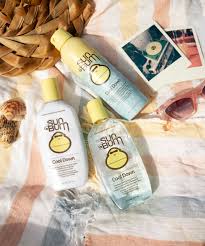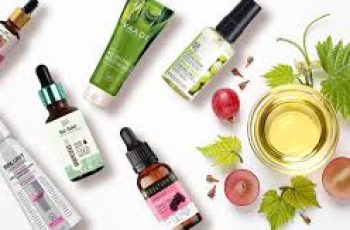
How to Take Care of Your Skin After a Day in the Sun
Spending a day basking in the sun may feel rejuvenating, whether you’re at the beach, hiking a trail, or lounging in your backyard with a book and a cool drink.
The warm rays can lift your spirits, but they can also strip moisture, damage skin cells, and leave behind signs of stress like redness or tightness if you’re not careful.
While sunscreen helps defend your skin during exposure, it doesn’t erase the need for a solid post-sun routine to support recovery, comfort, and long-term skin health.
Many people neglect their skin after sun exposure, mistakenly thinking that sun protection ends once the sun sets or they return indoors from their outdoor adventures.
The truth is, even if you diligently applied sunscreen, the sun’s ultraviolet (UV) rays can still trigger dehydration, inflammation, and oxidative stress that linger beyond the daylight hours.
To maintain a radiant complexion and minimize the risk of premature aging or long-term skin damage, caring for your skin after sun exposure is essential.
Let’s explore a comprehensive and gentle routine to restore your skin’s vitality and hydration after a full day in the sun’s embrace.
Start With a Cool, Refreshing Shower
The first and perhaps most refreshing step in post-sun skincare is to take a cool shower to rinse away sweat, sunscreen, salt, chlorine, and pollutants clinging to your skin.
Use gentle, fragrance-free cleansers to avoid irritating sun-stressed skin, and skip overly hot water that can worsen dryness or cause further inflammation.
If you’re sunburned, opt for lukewarm water over cold as extreme temperatures can shock the skin and heighten redness, irritation, or sensitivity.
A cool bath infused with soothing ingredients like colloidal oatmeal, baking soda, or a splash of apple cider vinegar can further calm and comfort irritated skin.
After bathing, pat your skin dry with a soft towel instead of rubbing, which can disrupt the skin’s barrier and cause unnecessary friction or microtears.
Immediately follow with a nourishing moisturizer to lock in hydration while your skin is still damp, sealing moisture deep into the surface layers.
Hydrate With a Skin-Soothing Moisturizer
Moisturizing is one of the most important steps after sun exposure, as UV rays dehydrate the skin and can compromise its protective lipid barrier.
Look for moisturizers or after-sun products containing soothing, reparative ingredients like aloe vera, hyaluronic acid, glycerin, or panthenol (vitamin B5).
These ingredients draw water into the skin, reduce inflammation, and promote faster healing while providing a lightweight, cooling sensation.
Avoid heavy, greasy formulations that may trap heat in the skin or cause breakouts—opt instead for gel-based or water-rich creams that absorb quickly.
Apply your moisturizer twice daily for several days following sun exposure to replenish your skin’s hydration and maintain its soft, supple texture.
If your skin feels tight, flaky, or hot to the touch, layer your moisturizer with a soothing mist or a cooling serum to amplify hydration and comfort.
Be sure to moisturize areas often forgotten, like the neck, ears, tops of the feet, and backs of the hands, which also bear the brunt of sun exposure.
Exfoliate With Care (Only If Your Skin Can Tolerate It)
Exfoliating after sun exposure can help remove dead skin cells, sunscreen residue, and impurities, but it must be done with caution and only when appropriate.
If you have visible sunburn, sensitivity, or irritation, skip exfoliation entirely until your skin fully heals, as it can worsen inflammation or cause long-term damage.
If your skin feels normal and unburned, a gentle exfoliant—like lactic acid or polyhydroxy acid (PHA)—can brighten your complexion and clear clogged pores.
Avoid abrasive scrubs or rough cloths that may cause microtears or strip away protective oils, especially after a day spent under the sun.
Limit exfoliation to once or twice a week post-sun exposure, and always follow up with a deeply hydrating moisturizer to restore the skin’s moisture balance.
Hydrate From Within By Drinking Water and Eating Fresh Foods
Hydrating your skin from the inside is just as vital as applying moisturizers or masks—especially after sweating and prolonged exposure to heat and sunlight.
Make it a priority to drink at least 8 to 10 glasses of water after a day in the sun to replace lost fluids and help maintain healthy skin function.
You can also incorporate electrolyte-rich beverages if you’ve been active, hiking, or swimming, which helps restore salt balance and prevent dehydration.
Skin that’s dehydrated from the inside often appears dull, flaky, or tired, and rehydrating can restore its bounce, glow, and resilience more effectively.
Boost your hydration by consuming water-rich fruits and vegetables like cucumber, watermelon, oranges, lettuce, and strawberries, which support skin renewal.
These foods also deliver key antioxidants like vitamins A and C, which help fight free radical damage from sun exposure and support collagen production.
Apply a Hydrating Serum or Mask Before Bed
Evening skincare is a perfect opportunity to nourish sun-exposed skin while your body undergoes natural repair and renewal during sleep.
A hydrating serum or overnight mask with ingredients like hyaluronic acid, niacinamide, marine algae, or green tea extract can provide deep comfort and recovery.
Sheet masks saturated with calming and plumping ingredients offer a spa-like experience and deliver a concentrated dose of hydration and antioxidants.
Apply your serum or mask on clean skin, and always seal it in with a moisturizer to help the ingredients penetrate and work overnight while you rest.
Products with marine botanicals or chamomile can soothe redness and help your skin bounce back quickly from mild irritation or dryness.
Using a cooling jade roller or chilled gua sha tool can further enhance absorption and calm any inflammation while stimulating lymphatic drainage.
Don’t Forget About Your Lips and Scalp
Sun exposure doesn’t just affect your face or body—your lips and scalp are often overlooked yet equally vulnerable to UV damage.
The lips lack oil glands and have very thin skin, making them especially prone to drying, cracking, or peeling after time spent in the sun.
Apply a balm with hydrating and protective ingredients like beeswax, shea butter, and vitamin E, avoiding formulas with irritants like menthol or added fragrance.
Reapply your lip balm frequently, especially after eating, drinking, or being outdoors, and use SPF-infused lip protection during future sun exposure.
Your scalp, particularly if you have thin or fine hair, may burn just as easily as any other part of your body—especially along part lines or exposed areas.
If your scalp feels dry or tender, use a gentle, sulfate-free shampoo and apply a nourishing scalp serum or aloe-based treatment to soothe the skin.
Until your scalp feels normal again, avoid using hot styling tools, hair dyes, or alcohol-heavy products that may cause further dryness or discomfort.
Support Skin Recovery With Antioxidants and Barrier Repair
Sun exposure generates free radicals that accelerate skin aging and inflammation, so including antioxidant-rich products in your post-sun routine is beneficial.
Topical antioxidants like vitamin C, green tea extract, and resveratrol can help neutralize oxidative stress and support your skin’s natural healing process.
Use a serum or lotion containing these ingredients in the days following sun exposure to brighten dullness, even tone, and defend against future damage.
Also, focus on strengthening your skin barrier with ingredients like ceramides, cholesterol, and fatty acids that reinforce your skin’s outermost layer.
A healthy barrier helps lock in moisture, shield against pollutants, and protect your skin from environmental stressors and potential irritation.
Conclusion: Make After-Sun Care a Consistent Habit
Sun care doesn’t end with sunscreen—it continues with thoughtful recovery that nurtures, heals, and revitalizes your skin after time spent outdoors.
Taking a cool shower, applying gentle moisturizers, skipping exfoliation when burned, hydrating from within, and using reparative treatments are essential.
Don’t forget small but significant areas like your lips and scalp, which deserve just as much post-sun attention as the rest of your skin.
The combination of hydration, barrier repair, antioxidant defense, and gentle cleansing ensures that your skin stays healthy, smooth, and glowing all year long.
With the right post-sun habits, you can embrace sunny days without compromising your skin’s beauty or resilience—making every outdoor experience a radiant one.


